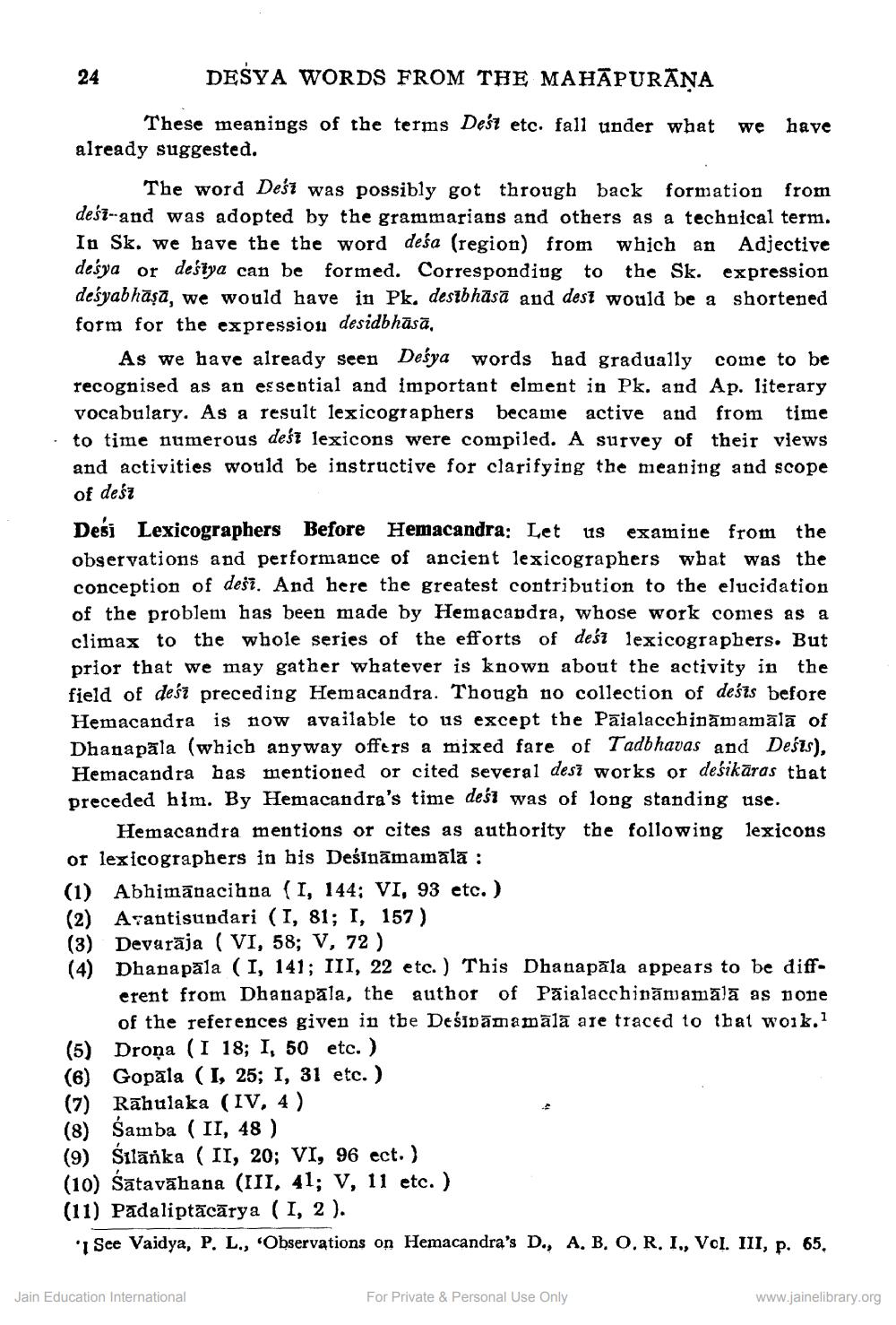________________
24
DESYA WORDS FROM THE MAHĀPURĀŅA
These meanings of the terms Dest etc. fall under what we have already suggested.
The word Deść was possibly got through back formation from deśž-and was adopted by the grammarians and others as a technical term. In Sk. we have the the word deśa (region) from which an Adjective desya or desiya can be formed. Corresponding to the Sk. expression deśyabhāşa, we would have in Pk, desibhāsā and dest would be a shortened form for the expression desidbhāsā,
As we have already seen Deśya words had gradually come to be recognised as an essential and important elment in Pk. and Ap. literary vocabulary. As a result lexicographers became active and from time to time numerous deść lexicons were compiled. A survey of their views and activities would be instructive for clarifying the meaning and scope of desz Desi Lexicographers Before Hemacandra: Let us examine from the observations and performance of ancient lexicographers what was the conception of desi. And here the greatest contribution to the elucidation of the problem has been made by Hemacapdra, whose work comes as a climax to the whole series of the efforts of deść lexicographers. But prior that we may gather whatever is known about the activity in the field of desī preceding Hemacandra. Though no collection of deśīs before Hemacandra is now available to us except the Pāialacchināmamālā of Dhanapala (which anyway offers a mixed fare of Tadbhavas and Desis), Hemacandra bas mentioned or cited several desi works or desikäras that preceded him. By Hemacandra's time desi was of long standing use.
Hemacandra mentions or cites as authority the following lexicons or lexicographers in his Deśināmamalā : (1) Abhimānacihna (I, 144; VI, 93 etc.) (2) Avantisundari (I, 81; I, 157 ) (3) Devarāja ( VI, 58; V, 72 ) (4) Dhanapala (I, 141; III, 22 etc.) This Dhanapāla appears to be diff
erent from Dhanapala, the author of Păialacchināmamālā as pone
of the references given in tbe Deśīdāmamālā are traced to that work. (5) Drona (I 18; I, 50 etc.) 6) Gopala (1, 25; I, 31 etc.) 7) Rahulaka (IV, 4).
Samba (II, 48 ) (9) Silānka ( II, 20; VI, 96 ect.) (10) Śātavāhana (III, 41; V, 11 etc.) (11) Padaliptācārya (I, 2).
See Vaidya, P. L., 'Observations on Hemacandra's D., A, B, O.R.I., Vol. III, p. 65.
Jain Education International
For Private & Personal Use Only
www.jainelibrary.org




